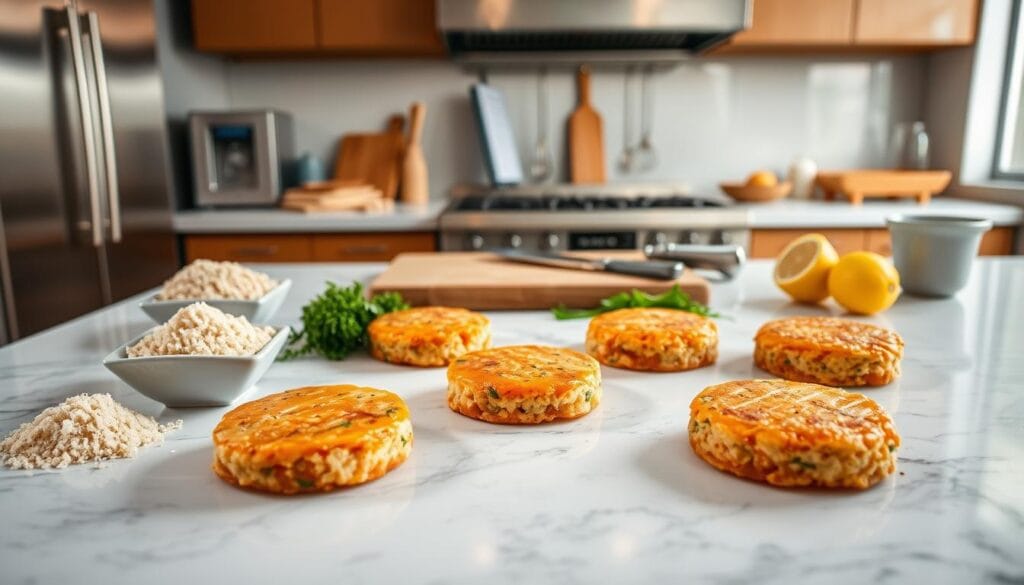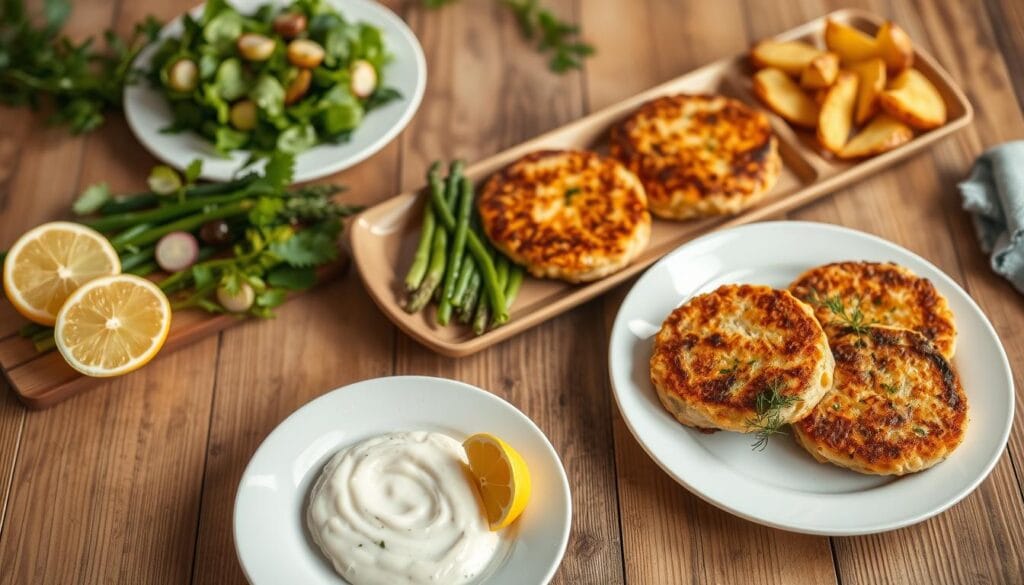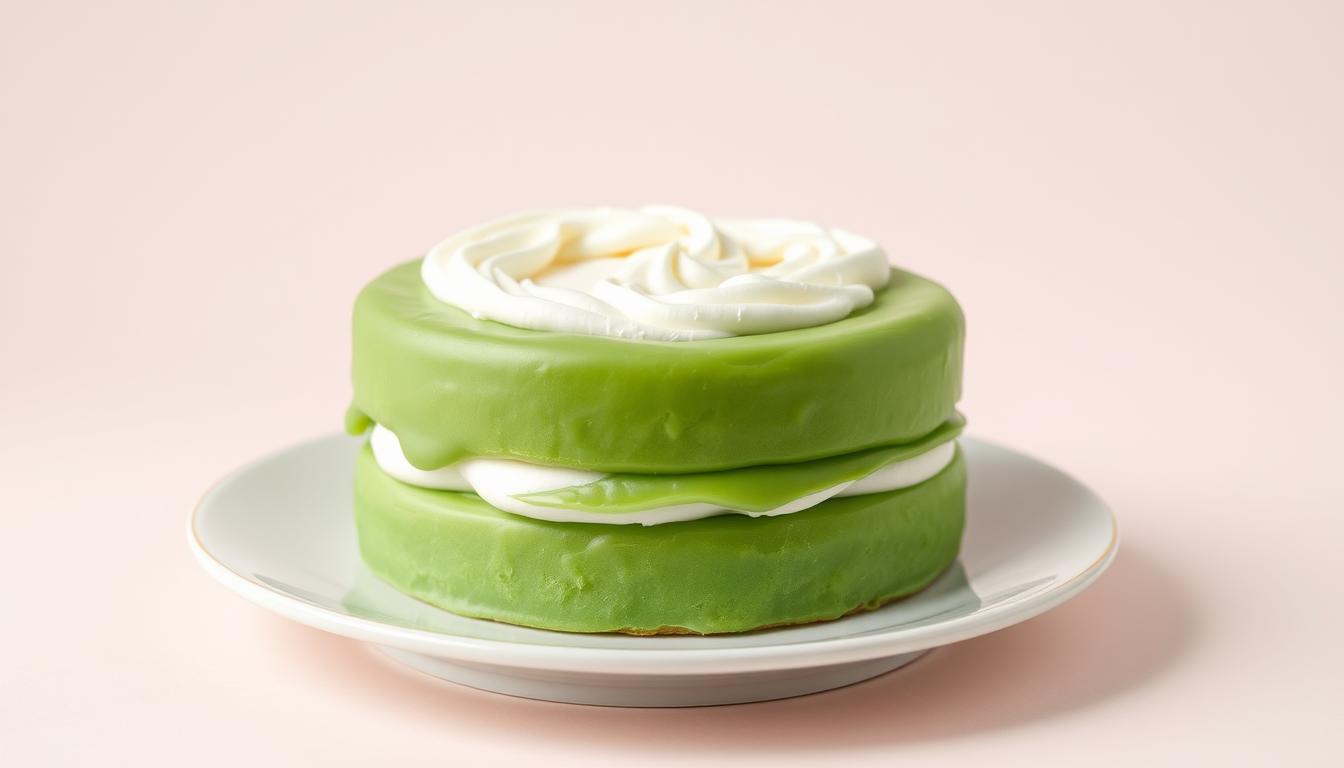There’s a certain comfort in a dish that feels like home—where every bite takes you back to cozy dinners and familiar flavors. Maybe it’s the golden, crispy edges that give a satisfying crunch, or the way a simple meal can stir up memories of shared meals and stories told around the table. For many, salmon patties are more than just a quick fix—they’re a nostalgic staple with timeless appeal.
If you’ve ever wondered how to make salmon patties that are both easy and flavorful, this recipe delivers. Whether you’re using canned salmon from your pantry or fresh fillets from the market, you’ll turn a handful of everyday ingredients into something truly crave-worthy. The outside crisps up beautifully, while the inside stays moist and flaky, seasoned just right with herbs, onion, and a splash of lemon for brightness.
These patties are versatile too—serve them as appetizers, slip them into sandwiches, or plate them as a hearty main course. With just 30 minutes and minimal cleanup, you’ll have a family-friendly meal that’s as satisfying as it is stress-free. Perfect for busy weeknights or when you need a touch of tradition on your plate.
Table of Contents
Key Takeaways
- Ideal for weeknights: Prep and cook in under 30 minutes.
- Canned salmon saves time and money without sacrificing flavor.
- Achieve a crisp exterior and tender interior with simple pan-frying.
- Versatile enough to pair with salads, sandwiches, or dipping sauces.
- Recipe scales easily for larger gatherings or leftovers.
Introduction to This Delicious Salmon Patties Recipe
Every great dish starts with a perfect balance of texture and technique. What sets this patties recipe apart is its ability to deliver restaurant-quality results with minimal effort. Crispy edges meet tender centers, whether you choose an air fryer or classic stovetop method.
Prefer hands-off cooking? The air fryer ensures even heat distribution for consistent golden brown perfection. Traditionalists will love the control of a skillet medium heat approach—just enough sizzle to lock in moisture while building that crave-worthy crust.
No special skills are required. Mix, shape, and cook. This formula skips complicated steps without sacrificing flavor depth. Fresh herbs brighten each bite, while pantry staples keep costs low. Want extra crunch? A light coating of breadcrumbs adds texture.
Upcoming sections break down every detail—from ingredient ratios to timing adjustments. You’ll discover how slight variations in cooking temperature or appliance choice can elevate your results. Ready to transform simple ingredients into something unforgettable?
Why You Should Try How to Make Salmon Patties
Weeknight dinners demand solutions that satisfy without stress. These golden discs deliver restaurant-quality taste with ingredients already in your pantry. Families adore them for their reliability—even picky eaters often ask for seconds.
Medium heat transforms simple ingredients into crispy perfection. Unlike high-temperature frying that risks burning, gentle sizzling creates a crust that locks in moisture. One home cook raves, “The first bite convinced my kids to eat fish willingly.”
Seasonings like black pepper add depth without overpowering the salmon’s natural richness. A dash brightens the mix, while fresh herbs offer aromatic complexity. Best of all? You don’t need advanced skills—just mix, shape, and cook.
Crave versatility? Serve them atop salads, in sandwiches, or with zesty dips. Leftovers reheat beautifully, maintaining their texture when stored properly. Even those skeptical about seafood often find themselves reaching for another.
Time-crunched households benefit most. From prep to plate, you’ll spend less than half an hour. Affordable, adaptable, and consistently delicious—it’s no wonder this dish earns a permanent spot in meal rotations across the country.
Ingredient Essentials and Pantry Staples
Pantry heroes often hide in plain sight. With a few smart choices, you can craft meals that delight without last-minute grocery runs. Let’s explore what transforms simple components into cohesive, crave-worthy creations.
Canned Salmon Versus Fresh Options
Canned salmon shines for its convenience—no prep needed, and it’s budget-friendly. Its softer texture blends seamlessly into the salmon mixture, making it ideal for quick meals. Fresh salmon, while pricier, offers firmer flakes and a bolder flavor profile. Perfect for special occasions or when you crave extra richness.
| Feature | Canned | Fresh |
|---|---|---|
| Prep Time | 0 minutes | 10-15 minutes |
| Cost per Serving | $1.20 | $3.50 |
| Texture | Mild, tender | Flaky, robust |
Other Key Ingredients and Their Roles
Breadcrumbs add crunch while absorbing excess moisture. Eggs act as glue, binding everything in your large bowl. Fresh herbs like dill or parsley brighten flavors, and lemon zest cuts through richness. Don’t skip the onion—it adds subtle sweetness when finely chopped.
Mix ingredients gently in your large bowl to avoid overworking the salmon mixture. Leftovers? Store uncooked portions in an airtight container for up to two days. This flexibility makes these salmon recipes perfect for busy households.
Whether using fresh salmon or canned, your pantry holds the power. With these staples, you’re minutes away from golden perfection every time.
Preparation Steps and Key Techniques
Mastering texture begins long before the skillet heats up. Proper prep work ensures your salmon cakes hold their shape while delivering balanced flavors. Let’s break down the foundational steps that separate crumbly disappointments from golden perfection.

Properly Draining and Flaking the Salmon
Start by pressing canned fish against a strainer to remove excess liquid. Gentle squeezing prevents mushiness while preserving structure. For fresh fillets, bake or poach until just cooked through—overdoing it creates dry flakes.
Discard any bones or skin from both options. Use a fork to separate meat into pea-sized pieces. “Larger chunks add satisfying texture,” notes a seafood chef from Portland. This step ensures even distribution in your recipe salmon mixture.
Chopping Vegetables and Binding Ingredients
Finely dice onions and bell peppers—aim for pieces no bigger than sesame seeds. Uniform cuts prevent uneven cooking and help bind everything together. Combine veggies with flaked fish in a large bowl.
Add breadcrumbs slowly while mixing. Stop when the recipe salmon blend holds its shape when pressed. Test by forming a small ball—if it cracks, add another teaspoon of egg or mayo. This attention to consistency guarantees salmon cakes that stay intact during flipping.
Cooking Methods: Skillet, Air Fryer, and Oven Alternatives
Crispy edges and tender centers aren’t magic—they’re method. Your choice of appliance shapes texture and flavor. Let’s explore three reliable paths to golden perfection.
Skillet Cooking: Medium Heat Tips
Heat 2 tablespoons of oil in a skillet over medium heat. Too hot? The exterior burns before the inside cooks. Too low? You’ll miss the crunch. Test readiness by flicking a breadcrumb into the pan—it should sizzle gently.
Cook patties 3-4 minutes per side. Flip once to avoid breaking. “Resist pressing them down—it squeezes out moisture,” advises a diner chef. Drain on paper towels to preserve crispness.
Air Fryer and Oven Techniques
For lighter options, preheat an air fryer to 400°F. Spritz baskets with oil, then cook 10-12 minutes, flipping halfway. Oven users: Bake at 425°F on a greased sheet for 15-18 minutes. Both methods deliver crunch without constant monitoring.
| Method | Time | Oil Used |
|---|---|---|
| Skillet | 8 mins | 2 tbsp |
| Air Fryer | 12 mins | 1 tsp |
| Oven | 18 mins | 1 tbsp |
Choose based on your schedule. Weeknight rush? The skillet wins. Health-focused meal? Air frying shines. Feeding a crowd? The oven handles batches effortlessly. Your recipe adapts to life’s demands.
Enhancing Flavor: Seasonings and Add-ins
Flavor transformations happen one pinch at a time. The right blend of spices and herbs can elevate simple ingredients into memorable meals. Let’s explore how to layer tastes without overwhelming the star of your dish.
Spice It Up with Black Pepper and Garlic
Black pepper adds warmth, while garlic brings earthy depth. A quarter teaspoon of each per cup of mixture creates balance. For boldness, double the garlic and add a pinch of smoked paprika. “Spices bloom best when toasted,” suggests a Nashville chef—try sautéing them briefly in oil before mixing.
Citrus and Herb Enhancements
Brighten flavors with lemon zest or lime juice. One tablespoon per batch cuts through richness without acidity overload. Fresh dill or parsley adds grassy notes—chop finely for even distribution. Pair herbs with complementary side dishes like cucumber salad or roasted veggies.
| Herb | Citrus Pairing | Flavor Impact |
|---|---|---|
| Dill | Lemon | Fresh, tangy |
| Parsley | Lime | Zesty, vibrant |
| Chives | Orange | Sweet, mild |
Adjust heat levels with chili flakes or cayenne. Start small—you can always add more after tasting. Remember: seasonings should highlight, not hide, your core ingredients.
Tips for Perfect Texture and Golden Brown Patties
Great texture starts with thoughtful preparation. Whether using fresh or canned ingredients, small adjustments in technique ensure crisp exteriors and moist interiors. Attention to detail separates crumbly failures from restaurant-worthy results.
Avoiding Common Pitfalls
Finely chopped onion and bell pepper distribute evenly, preventing clumps. Pieces larger than sesame seeds create uneven texture. A chef from Seattle notes, “Uniform veggie sizes help bind the mixture without excess moisture.”
Gently fold ingredients to avoid compacting. Overmixing leads to dense patties. Test the mixture by forming a small ball—if it holds, it’s ready. For golden crusts, preheat your skillet until oil shimmers but doesn’t smoke.
Cook each patty 3-4 minutes per side. Flip once to maintain structure. Pepper seasoning should enhance, not dominate—taste-test a small portion before shaping. Leftover blend? Store in an airtight container for up to two days.
Balance moisture with breadcrumbs. Too dry? Add a teaspoon of mayo. Too wet? Sprinkle extra crumbs. These tweaks guarantee patty integrity from pan to plate.
Serving Suggestions and Ideal Side Dishes
A great meal becomes unforgettable when every element sings in harmony. Pair your savory creations with sides that balance texture and nutrition. Whether you’re plating a casual weeknight dinner or hosting friends, these ideas elevate simplicity to artistry.

Pairing with Salads and Veggie Sides
Vibrant greens add freshness to rich flavors. Try a Niçoise-inspired salad with crisp beans, olives, and boiled egg. Roasted asparagus or garlicky sautéed spinach also shine. For crunch, serve with:
- Shaved Brussels sprouts tossed in lemon vinaigrette
- Shredded kale with dried cranberries and almonds
- Shaved carrot and cucumber ribbons with mint
These combinations turn basic recipes into balanced meals. Mix textures—creamy avocado slices alongside crispy veggies create contrast.
Creative Sauces to Complement Your Patties
Sauces add personality to every bite. Classic tartar works, but don’t stop there. Whip up a dill-yogurt blend or spicy sriracha mayo. A chef in New Orleans suggests, “Add capers to lemon aioli for briny brightness.”
| Sauce | Base | Mix-ins |
|---|---|---|
| Herbed Greek Yogurt | Plain yogurt | Dill, garlic, lemon zest |
| Smoky Chipotle | Mayonnaise | Chipotle powder, lime juice |
| Sweet Chili | Greek yogurt | Honey, red pepper flakes |
Drizzle sauces over salad bases or serve on the side for dipping. Garnish plates with microgreens or edible flowers for visual pop. Your dinner guests will remember both taste and presentation.
Storage and Reheating Leftovers
Leftovers often taste better the next day—if stored right. Proper techniques lock in flavor and texture, turning yesterday’s meal into today’s convenience. Let’s explore how to keep your creations tasting fresh without sacrificing quality.
Proper Storage: Refrigeration and Freezing
Transfer cooled portions to an airtight container within two hours of cooking. Layer parchment paper between patties to prevent sticking. Refrigerate for up to three days, or freeze for three months. For best results:
- Label containers with dates to track freshness
- Use a bowl to mix leftovers with extra breadcrumbs if freezing
- Avoid overcrowding—leave space for air circulation
Thaw frozen batches overnight in the fridge. A chef from Chicago advises, “Freezing works best when ingredients are slightly undercooked—they’ll finish during reheating.”
Reheating Techniques for Maintaining Crispiness
Revive that golden crust with these step-by-step methods. For stovetop reheating:
- Preheat a pan over medium heat with 1 tsp oil
- Cook 2-3 minutes per side until internal temp reaches 165°F
- Rest on a wire rack to preserve crunch
Air fryer users: Set to 375°F for 4 minutes. Flip halfway for even crisping. Adjust salt sparingly—leftovers retain seasoning from initial prep. Over-salting during reheating masks delicate herb flavors.
Monitor moisture levels. If patties feel dry, brush lightly with broth before heating. Store reheated portions in a bowl covered with foil to maintain warmth. These steps ensure every bite stays as satisfying as day one.
Nutritional Information and Cost-Efficiency
What’s the real cost of a meal that nourishes both body and budget? Let’s break down the numbers behind flavor-packed choices. Smart cooking balances nutrition with practicality—no advanced math required.
Nutrition Breakdown and Pantry Cost Analysis
Each serving delivers 220 calories, 18g protein, and 12g healthy fats. Canned versions cut sodium by 30% compared to fresh when rinsed thoroughly. “Garlic boosts immunity without adding calories,” notes a dietitian from Boston. Here’s how pantry staples stack up against premium ingredients:
| Ingredient | Pantry Cost | Premium Cost |
|---|---|---|
| Breadcrumbs | $0.15/serving | $0.40/serving |
| Garlic (per clove) | $0.10 | $0.25 |
| Eggs | $0.20/unit | $0.45/unit |
Swapping fresh herbs for dried saves $1.20 per batch. Use sides like steamed greens to stretch portions further. For tighter budgets, bulk-buy canned fish during sales—it lasts 2-3 years unopened.
Trim saturated fat by baking instead of frying. Replace mayo with Greek yogurt for extra protein. These tweaks take time but enhance nutrition without sacrificing taste. Pair with zesty sides like citrus slaw to round out the meal.
Conclusion
Simple ingredients often yield the most satisfying meals. This recipe transforms pantry staples into crispy, golden delights that adapt to any occasion. Whether served as a quick appetizer or paired with roasted broccoli for dinner, each bite delivers comfort without complexity.
Store leftover portions in an airtight container—future you will appreciate having a ready-made batch on hectic days. Experiment with zesty sauce variations like lemon-dill yogurt or smoky chipotle mayo to elevate flavors. These additions turn familiar ingredients into new experiences.
Your pantry holds endless possibilities. Try tossing steamed broccoli with garlic oil for a vibrant side. Freeze extra patties for last-minute meals, and always keep your favorite sauce on hand. With minimal effort and maximum flavor, this dish proves that great cooking starts with smart choices.
FAQ
Can I use fresh salmon instead of canned for this recipe?
What’s the best way to keep patties from falling apart during cooking?
Can I cook these in an air fryer for a crispier texture?
How long do leftovers stay fresh, and what’s the best storage method?
What sides pair well with salmon patties?
Are there gluten-free alternatives for breadcrumbs in the mixture?
Can I prep the mixture ahead of time for quicker cooking?
What’s the nutrition profile of these patties?
Try These Next:
- Gluten-Free Desserts for Busy Professionals
- Dairy-Free & Gluten-Free Soup Ideas
- Healthy Weeknight Meals




